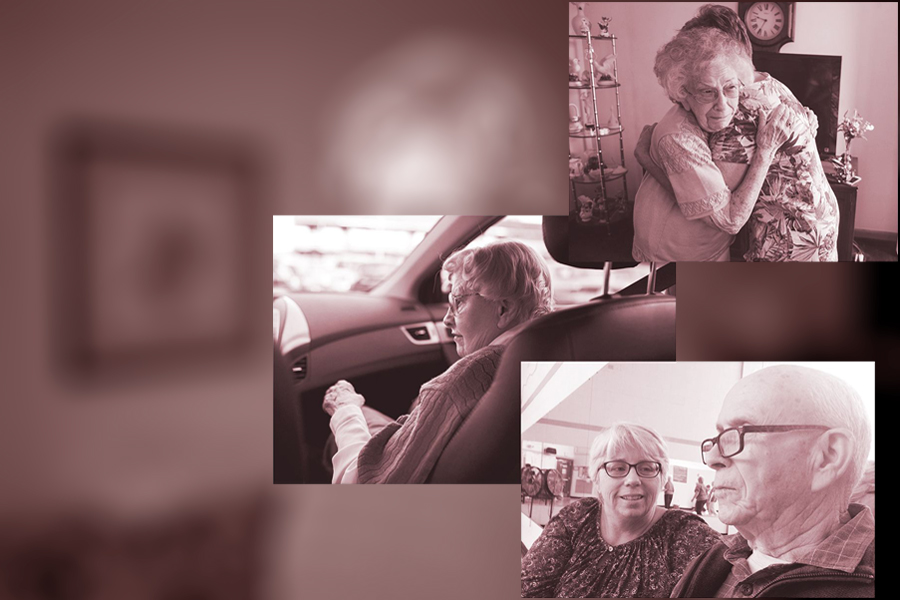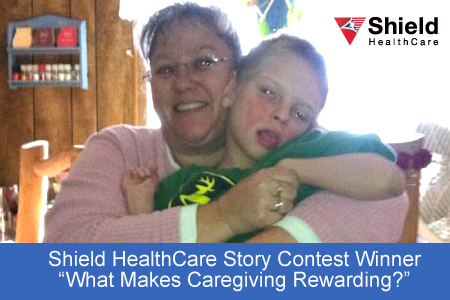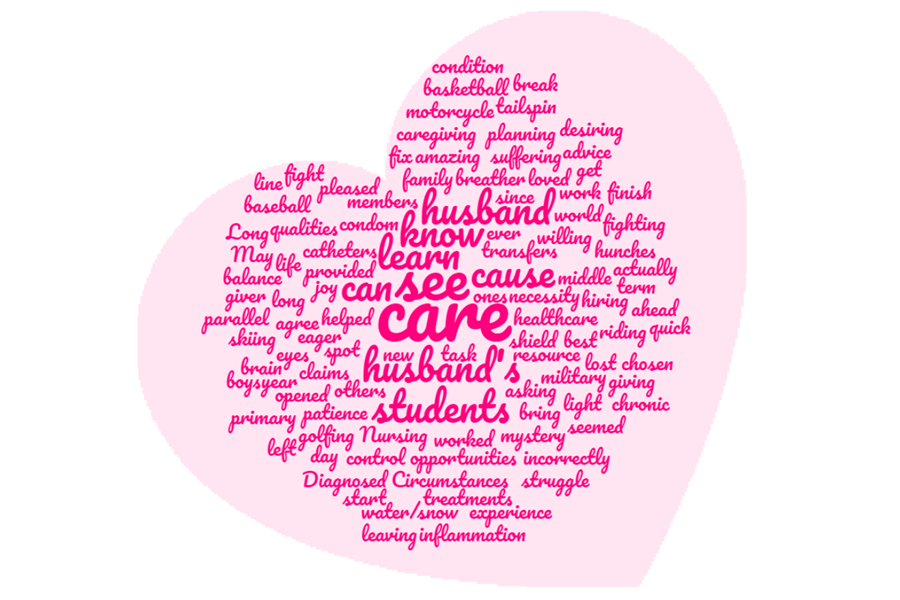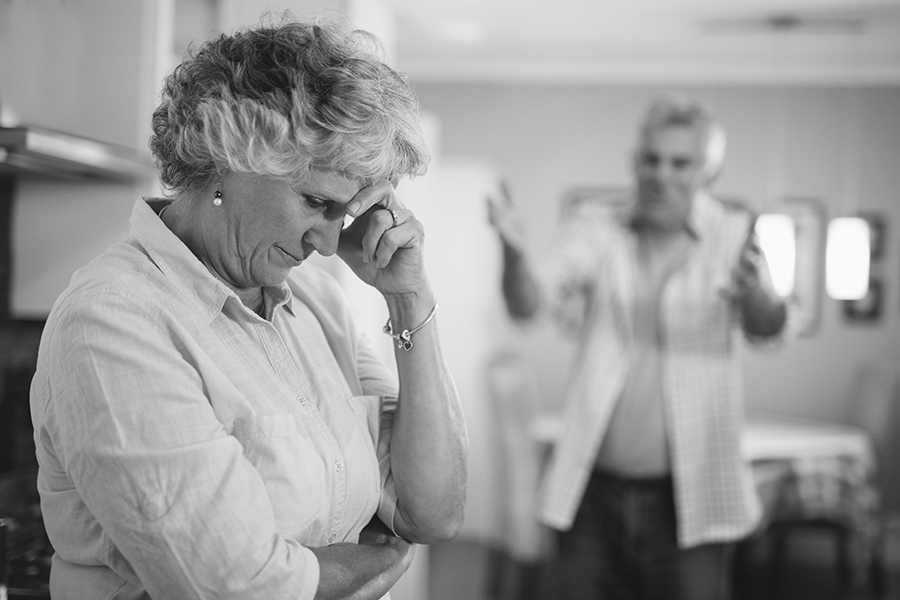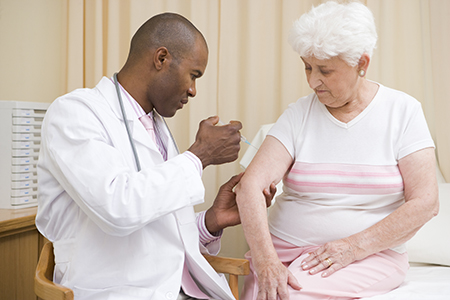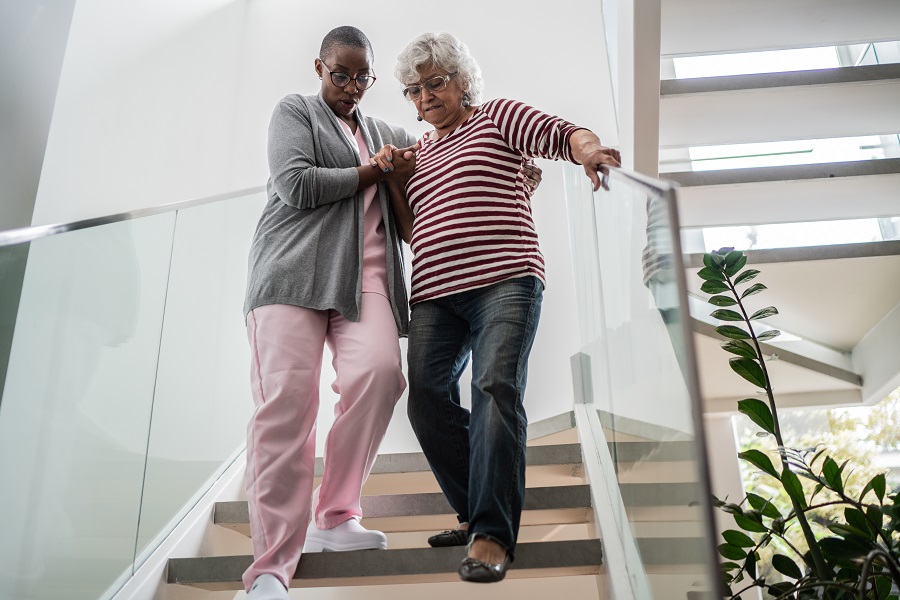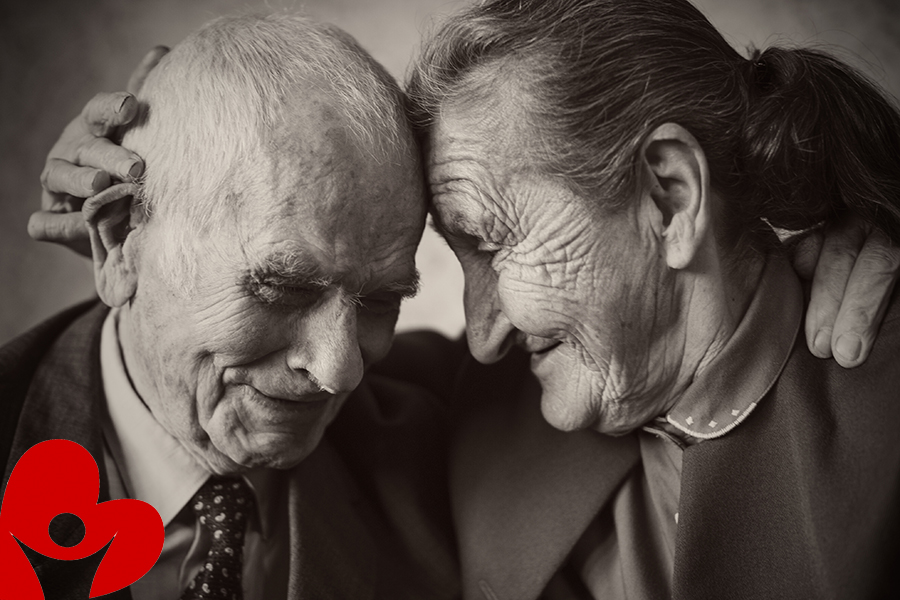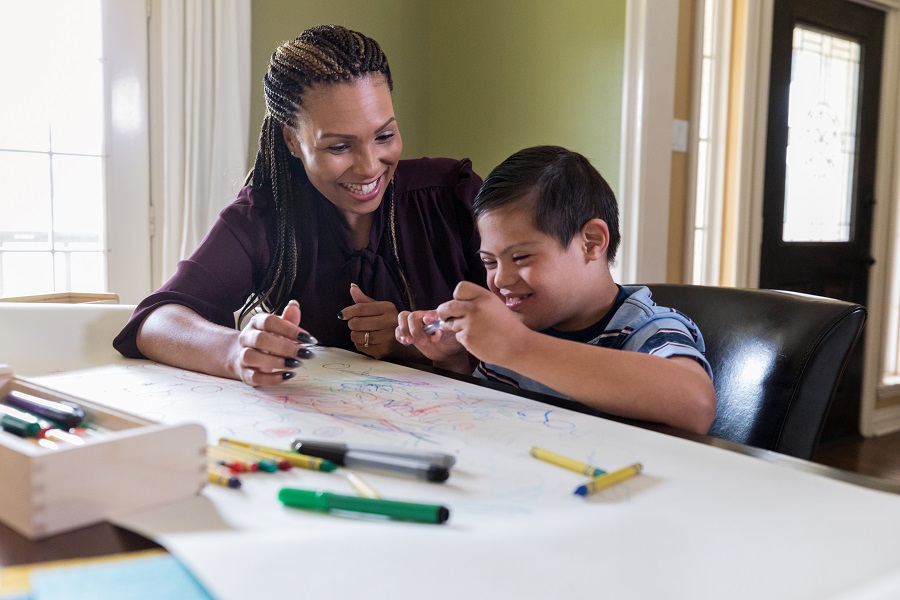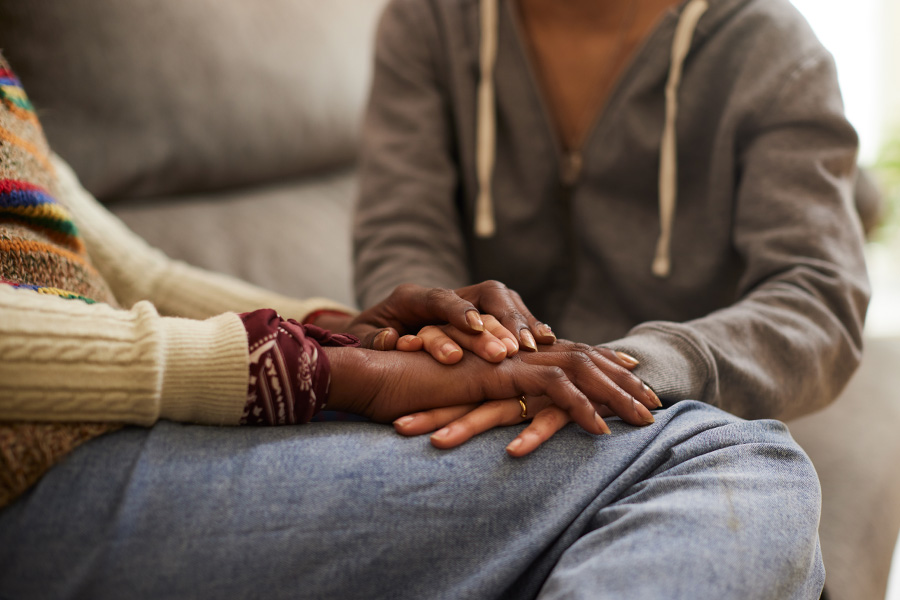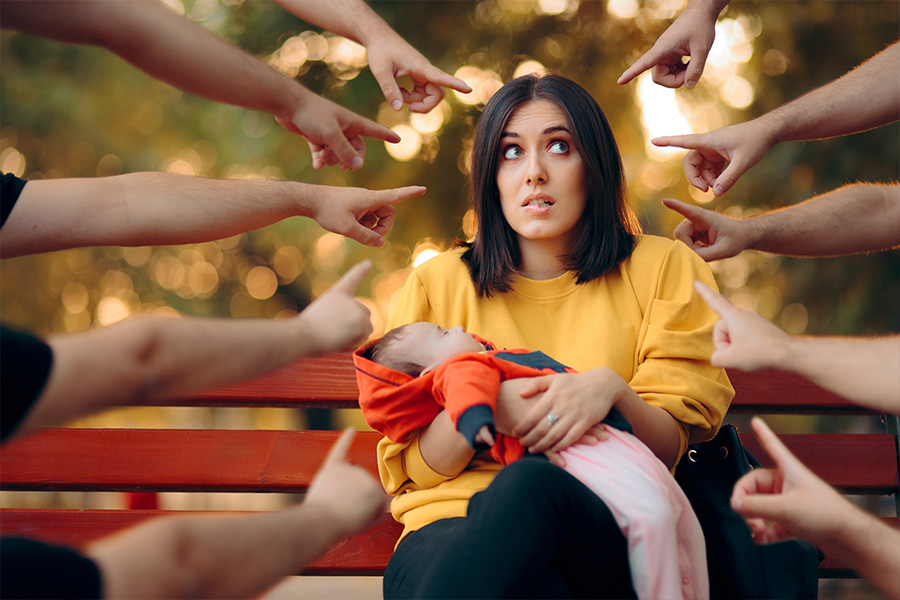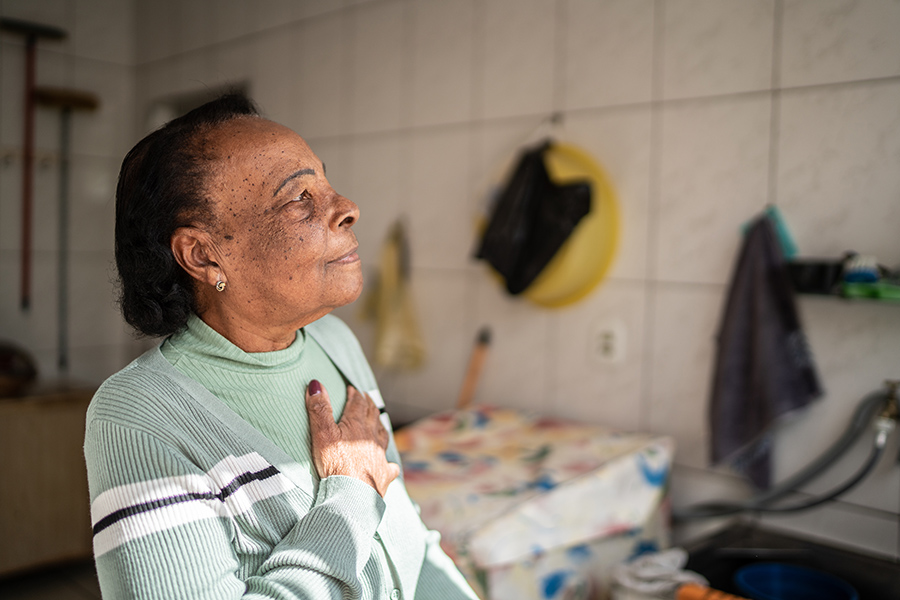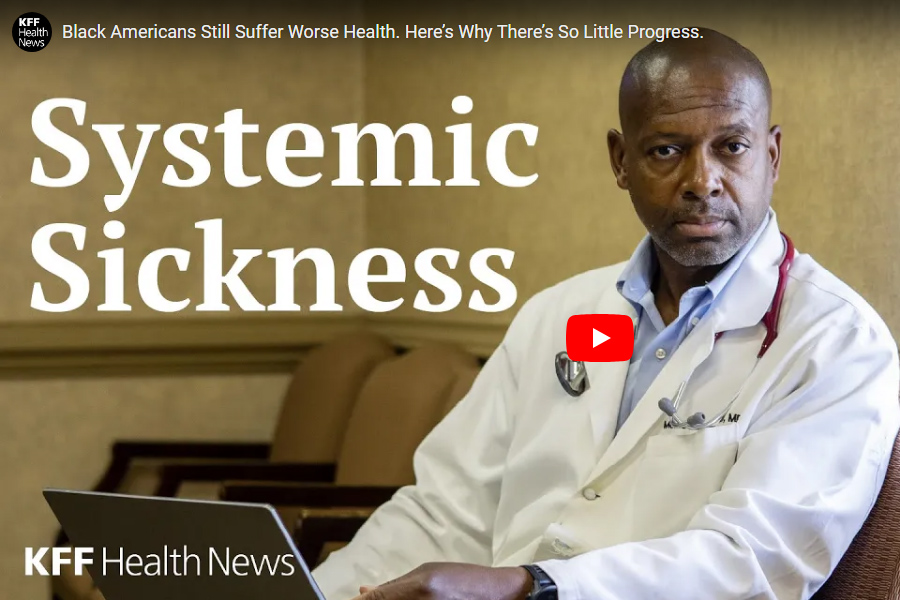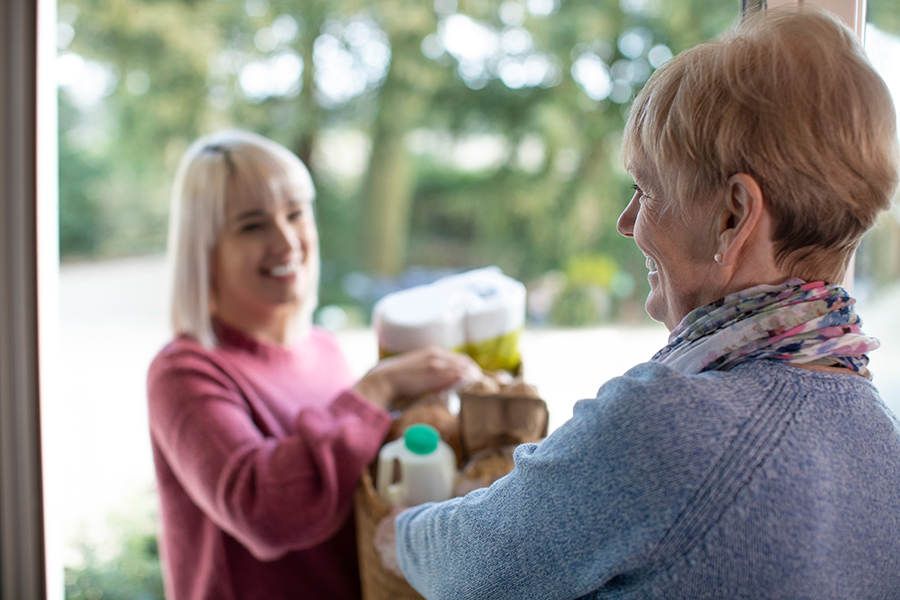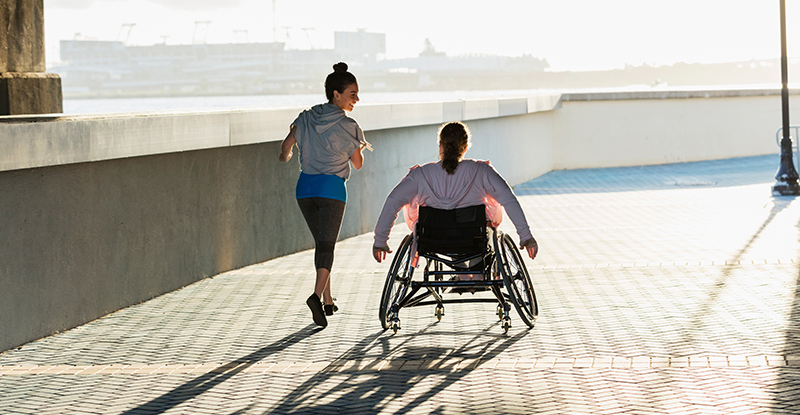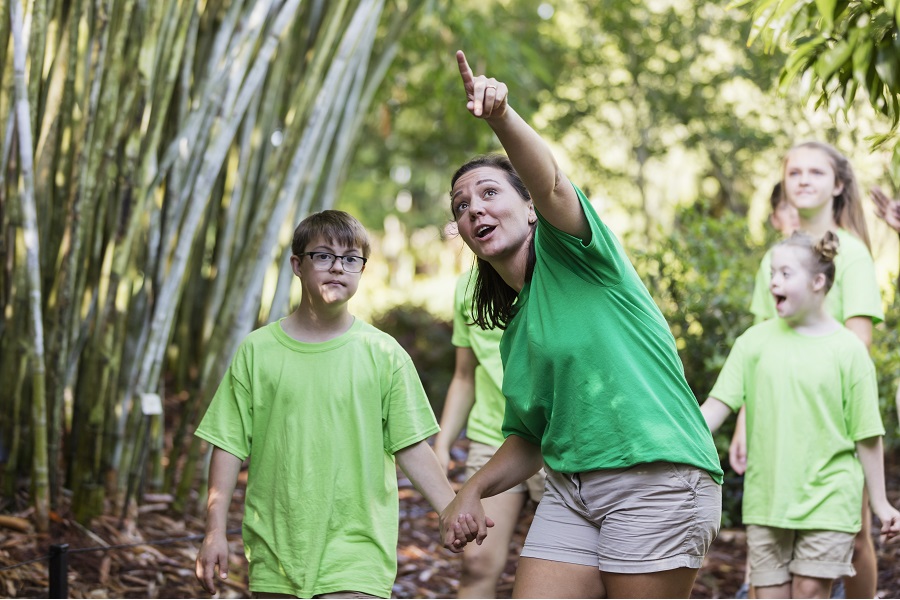By Clare Ansberry | Wall Street Journal
Smaller, more far-flung families mean fewer unpaid helpers; ‘Are you really my daughter?’
Clesta Dickson, 86 years old, never married. The retired teacher lives on her own in a tidy apartment on the second floor of Pleasantview Towers, a subsidized apartment building for older adults and people with disabilities in Vienna, W.Va.
When her own parents became frail, she bought a house for the three of them. They died years ago. She has a brother, but he is 82. Without children of her own, she wonders what will happen to her.
“I think about it all the time,” she says. She made her funeral arrangements, after noticing how many people she knew died and never had a memorial service or obituary.

For generations, the nation has relied on family members to keep aging loved ones in their homes. Today, many Americans are growing older without family nearby, offering a glimpse of what the future may hold for the cohort of Americans who are approaching retirement.
The caregiving crunch comes at a time when Americans reaching retirement age are in a squeeze unseen in generations. Their median incomes, including Social Security and retirement fund receipts, haven’t risen in years. They have high average debt, some incurred from taking care of their own aging parents. And if they’re counting on family to care for them, too, they may well find their families too small and far-flung to meet the task.
Today, an estimated 34.2 million people provide unpaid care to those 50 and older. These caregivers, about 95% family, and long the backbone of the nation’s long-term care system, provide an estimated $500 billion worth of free care annually—three times Medicaid’s professional long-term care spending—and help keep people out of costly institutions, according to a 2017 Merrill Lynch study.
But the supply of these caregivers is shrinking just as the nation needs them most. Every day, 10,000 people turn 65. In 2020, there will be 56 million people 65 and older, up from 40 million in 2010.
Aging Americans
Meanwhile, the ratio of caregivers to care recipients peaked in 2010 and has been falling since, in large part because of changing family dynamics.
“Families have fewer children, older adults are more likely to have never married or to be divorced and adult children often live far from their parents or may be caring for more than one adult or their own children,” noted a 2016 study by the National Academy of Sciences.
The private sector isn’t an option for many older adults. Demand for private home health aides is expected to exceed supply by more than three million in the next decade. Many can’t afford it even if it was available. A full-time home-health aide costs, on average, $49,000 a year, according to a 2017 Cost of Care Survey by Genworth, a long-term-care insurance company.
Public support hasn’t kept pace either. Medicare and other government programs provide a fraction of the long-term supportive services that people need to remain in their own homes. Medicare generally doesn’t pay for long-term care stays in nursing homes, which can cost close to $100,000 a year for a private room.
After a person has spent down resources, like bank accounts and stocks, Medicaid, a needs-based state and federal program, will pay for most nursing home costs, but coverage and eligibility varies by state.
Families are putting together a patchwork of support, which can fray at the first broken hip. Ex-spouses are taking care of former spouses. Childhood friends watch out for parents of peers who moved away. Some grow old on their own.
Boomers, often caregivers themselves, are going to need care. For many, it is unclear who will provide it.
“We’re going to have to look to nontraditional care,” says Ken Dychtwald, CEO of Age Wave, a consulting firm. Older adults, he says, may have to take in boarders, who can help with shopping and repairs, or rely more on monitoring devices and delivery services.
Care from Afar
Adult children are more mobile. That has led to more long-distance caregivers.
Shelly Cooley Hoce, 56, lives in Florida, as does her only sibling. Her parents, both in their 80s, live 800 miles away in Ohio. Her father, Chad Cooley, a longtime fire chief, was diagnosed with Alzheimer’s in 2013. He no longer recognizes her when she visits.
“Are you really my daughter?” he asked her during a recent trip.
She told him yes. He started crying. “Why can’t I remember that?” she recalls him asking.
Shelly often worried about her mom, Sue, getting overwhelmed as her dad became more belligerent and wandered down the street. Shelly and her brother take turns going to see their parents every six weeks or so. In between, she relies on friends, extended family and acquaintances to help.
Children do what they can from hundreds of miles away, checking references for an aide, managing bills, or arranging grocery deliveries. They often feel guilty for not being there to take a parent to the doctor and uncertain about how someone is really doing.
Cost of Care
Technology can alert remote caregivers to emergencies and keep families in touch, but it doesn’t take the place of having someone there to make sure there is food in the refrigerator. Geriatric care managers, often nurses or social workers, manage care locally but can cost between $50 and $200 an hour.
Shelly counts on an aunt, who lives 45 minutes away, to visit and calls a cousin if something goes wrong with her mom’s computer. She can always call Kay Taylor, who she has known since kindergarten. Growing up, they had sleepovers at each other’s houses and went to Athens Bulldogs Friday night football games.
In recent times, Ms. Taylor stayed with Shelly’s dad so her mom could run errands—going to the bank, the post office or the Dollar Tree to buy greeting cards.
Sue appreciated the help, as caring for her husband became harder. Long particular about his looks, he wouldn’t willingly brush his teeth or shower and got up in the middle of the night. It got to the point, she said, that she had “to lock us in our bedroom at night.”

Shelly tried to convince her parents to move to Florida. Her mom doesn’t want to leave Athens, Ohio, where she and her husband were born and raised. They have siblings, friends and church there. Shelly understands that, but worried about the strain on her mom. “I always feel like I need to be there,” she says.
Two weeks ago, Shelly visited her parents for a few days and flew home. Two days later, she was back in Ohio. Her dad had a mild heart attack. Shelly and her mother needed to stay with him around the clock partly because of his Alzheimer’s and because hospital staff couldn’t get him to swallow his pills.
He was released Tuesday and moved into an Athens nursing home where his brother, who also has Alzheimer’s, lives. They are roommates. There was a moment, Shelly says, when they recognized each other and were pleasantly surprised to be in the same room.
Mr. Rogers’ Neighborhood
The elderly often depend on volunteers, with demand increasing for agencies that provide such help.
Viva Jane Noel lives in Latrobe, Pa., home of actor Fred Rogers, the consummate neighbor. Mrs. Noel, a 93-year-old widow, has lost much of her vision and relies heavily on the neighborliness of Mary Ann Coulston.
They met 17 years ago. “We’ve been buddies since,” says Mrs. Noel. They talk on the phone at least once a day and go out for meals and to celebrate her birthday.
Ms. Coulston, 60, a volunteer with a group called Laurel Faith in Action, takes Mrs. Noel grocery shopping and to doctor appointments, reads mail to her and picks up her prescriptions. One time, she painted her garage. Like all of the organization’s volunteers, Ms. Coulston isn’t paid or reimbursed for mileage.
Mrs. Noel has two daughters, both in their 60s, but one lives in California and the other in Wisconsin. They talk to their mom regularly and do what they can from afar. Her youngest, Shirley Kondek, arranged help around the house after her mom broke her rib. She and her sister, Sandy Christophersen, are grateful to have Ms. Coulston involved in their mom’s life, especially since their mom isn’t interested in moving.

Instead, Mrs. Noel wants to remain in her home, where she tends her violets and dusts her curios. Like many older adults, she is less fearful of dying than of nursing homes, which is why Ms. Coulston slept over after Mrs. Noel had her knees replaced. “If I wasn’t here to be with her, she would have had to go to a nursing facility and I knew she wanted no part of that,” says Ms. Coulston.
Jane Kerr, executive director of Laurel Faith in Action, which served 454 people 60 years and older in 2017, says the group has expanded to two neighboring towns. Even when adult children stay in the area, they are often working two jobs and have children of their own, she says. “They give what they can, but people can’t get enough help when they grow older,” especially when they are alone 24 hours a day.
The group is one of nearly 700 programs under the National Volunteer Caregiving Network, which serves an estimated 392,000 people a year in efforts to allow them to remain in their homes.
The average program in the network operates on an annual budget of $350,000, according to Tammy Glenn, acting executive director.
Funding is always an issue. People hear the word “volunteer” and don’t understand why they need money. “Funding children’s initiatives is considered an investment in the future. Older adults are considered an expense,” says Ms. Glenn.
Ex-Spouses
Between 1990 and 2010, the divorce rate among adults ages 50 and older doubled. That means fewer spouses are available as caregivers.

Norm Wien, 80, lost touch with his ex-wife, Karen, after they divorced in 1976. He now visits her at least once a week at the AHAVA Memory Care Residence in Pittsburgh, run by the Jewish Association on Aging. Karen has dementia.
Norm checks on her for two main reasons. He wants to help their daughter, Emily Wien Fagans, who lives in California with her husband and two children. Mr. Wien takes photos of Karen and sends them to Emily and updates her on any changes.
The second reason, he says, is to return the favor he received in the early 1980s.
Mr. Wien’s father had Alzheimer’s and his mother wasn’t well. They lived in New Jersey and he lived in Pittsburgh. Traveling back and forth 350 miles was difficult. Neighbors stepped in at his mom’s greatest moment in need. “They were there on the spot helping me. I am here on the spot helping my daughter. It’s my time,” he says.
He gets frustrated at times, not knowing how to communicate with Karen. Humor works, he says, as does touch, so he will massage her neck. She recognizes him, but also misplaces him, calling him her cousin or father. Mr. Wien’s significant other, who was an in-home health-care worker, goes with him to visit. Karen’s eyes light up when they walk in the room.
Labor of Love
Emily, who is 47, says moving her mother to California didn’t seem to be a good option. Costs for assisted living and memory care are much higher in the San Francisco area. Her dad was in Pittsburgh and so were some of her mother’s friends, who visit.
She says she is grateful to have her father as her eyes and ears there and is touched by his tenderness, noting her parents’ marriage lasted only six years. “I really feel he wants to give back to my mom,” she says.
Amy Dukes, director of memory care operations for the Jewish Association on Aging, admires how Mr. Wien and his daughter have worked out the situation. “He has a great relationship with his daughter, who has a great relationship with her mother,” she says.
The difficult part, says Mr. Wien, is seeing what might lie ahead for himself. “It isn’t a happy task,” he says. “I don’t feel resentment. I wish it were different. It’s heartbreaking. That’s the predominant feeling.”
Elder Orphans
One-third of middle-age adults are heading toward their retirement years as singles. Women, in particular, are likely to stay or become single as they age.
About 14% of frail older adults, or two million people, are without children and the number is expect to double by 2040, according to the AARP Public Policy Institute. “There’s no natural caregiver for this population,” says Grace Whiting, CEO of the National Alliance for Caregiving.
While they can, they need to construct a network around themselves, aging experts say. That is something Clesta Dickson has managed to do.

After her parents died, Miss Dickson sold her house and moved into an apartment because she wanted to be around people her age. She made friends. One of her neighbors, a tall man wearing a cowboy hat, vest and plaid shirt, knocked at her door one recent morning, asking if she had any trash to be emptied, something he does twice a week. After reading the Parkersburg News and Sentinel, she takes it to a woman who lives on the third floor.
On Thursday evenings, she attends a meeting of TOPS (Take Off Pounds Sensibly). “You need to have an outlet to socialize,” she says.
She stopped driving six years ago, contacted a volunteer organization called FaithLink, and typed out an application for transportation services on her manual 1940s-era Royal typewriter that sits next to her bed.
“We are here for Clesta to remain independent,” says Melissa Ogden, coordinator of FaithLink. Ms. Ogden brought students to the apartment complex to show residents how to set up their cellphones.
A church van picks Miss Dickson up for Sunday services. She spends $2 a week to take the senior citizen van to Walmart, and $1 for each hot meal from the Salvation Army. “What more could you ask?” she says, lifting the foil from the tray holding chicken, rice, mixed vegetables and a pear.
Most of her longtime friends have died, although she still corresponds with a pen pal in Virginia. She watches “Jeopardy” every night.
She had a stroke a few years ago and has a pacemaker. She had both knees replaced and cataracts removed, but is in decent health, she says.

Last fall, she made her 82-year-old brother, Jack, her power of attorney. Her refrigerator is covered with photos of him, his wife, and their family. “You wonder how much longer you have to live and who will go first, you or your brother,” she says.
Still she worries. She purchased long-term care insurance after she retired 30 years ago but had to drop it last year because premiums doubled to $600 a quarter. “I hated to do it after I put so much money into it,” she says.
Her church has an assisted-living facility. She would like to go there when she needs to, but worries about the cost, which is almost $3,000 a month for a private room and shared bath.
“I wouldn’t be able to afford a single,” she says, and wonders how she would get her things in one-half a room. Last Christmas, she gave two paintings to her great nieces.
FINDING HELP
Several programs and organizations work to help older adults stay in their homes, but the services and costs vary according to location.
- Transportation is a huge need for older adults who no longer drive. About 700 volunteer programs provide transportation free, and many help with things like grocery shopping and minor home repairs and yardwork. The National Volunteer Caregiving Network compiles a list of those programs. Places of worship, libraries, schools and community or senior centers also offer programs, often free, for older adults.
- Local agencies on aging can connect adults to services such as delivered meals, transportation and adult day-care services. The U.S. Administration on Aging’s www.eldercare.gov allows people to search by location or type of services needed such as grocery shopping and changing bandages, home repair, adult day care or food and nutrition.
- Dozens of private companies provide a range of help, from companionship and medication reminders to dressing, bathing and respite for family caregivers. It isn’t cheap if the help is needed full-time. Homemaker services, which include hands-off care such as cooking, cleaning and errands, can cost about $48,000 a year based on 42 hours a week. The National Association for Home Care & Hospice has a database of more than 33,000 home-care and hospice agencies.
- Technology such as personal emergency response systems, remote monitoring devices and mobile apps with medical reports can help families who live far away watch over parents who want to live at home.
- Home modifications can help older adults stay in their homes and can be as simple adding lever door handles, widening doorways or adding non-slip floor surfaces. A recent survey showed only about half of older adults felt their home would be able to accommodate them very well as they age.
Appeared in the July 21, 2018, print edition as ‘U.S. Is Running Out of Caregivers.’






